Hidden in a lush valley about an hour’s drive from Hội An, Mỹ Sơn sanctuary is one of Vietnam’s most atmospheric heritage sites. We joined a half-day tour with fellow Hub Hoi An friends, weaving through rice fields and small villages before arriving at this quiet archaeological wonder. For those drawn to ruins, moss, and textured histories, Mỹ Sơn is an unforgettable experience. You can book a guided tour to make the journey seamless.
Visiting Mỹ Sơn is not just a chance to see another UNESCO World Heritage Site—it’s an immersion into a place where history lingers in the air, where every brick seems to carry whispers of the past. The journey itself feels like a passage between worlds, moving from the bustle of Hội An’s lantern-lit streets to the calm valley where temples once pulsed with ritual and devotion.
A half-day escape from Hội An
Most tours to Mỹ Sơn run in the morning, offering cooler air and softer light for exploring the temples. From Hội An, it’s about an hour by bus or van, winding into the hills where the Cham people once built their spiritual capital. Our visit lasted around five hours door-to-door—long enough to wander slowly without feeling rushed, but not so long as to exhaust.
The drive itself is part of the experience. Passing through rice paddies, small hamlets, and riverside stretches, you begin to feel the transition into a quieter, more rural rhythm. Farmers bend low over their fields, and the occasional water buffalo grazes lazily by the roadside.
On arrival, the sanctuary feels understated. There is a small visitor center, but soon the paved path gives way to forest trails that guide you deeper into the valley. The anticipation builds with each step, and then, suddenly, the first ruins appear, their weathered outlines framed by green hills.
First impressions: a sanctuary wrapped in green
Stepping onto the sanctuary grounds feels like crossing into another world. Red-brick temples rise from the earth, their edges softened by centuries of moss, lichen, and creeping vines. The air hums with cicadas, and mountain ridges frame the horizon. Paths guide you between crumbling towers, carved stone altars, and remnants of walls that seem to breathe with history.
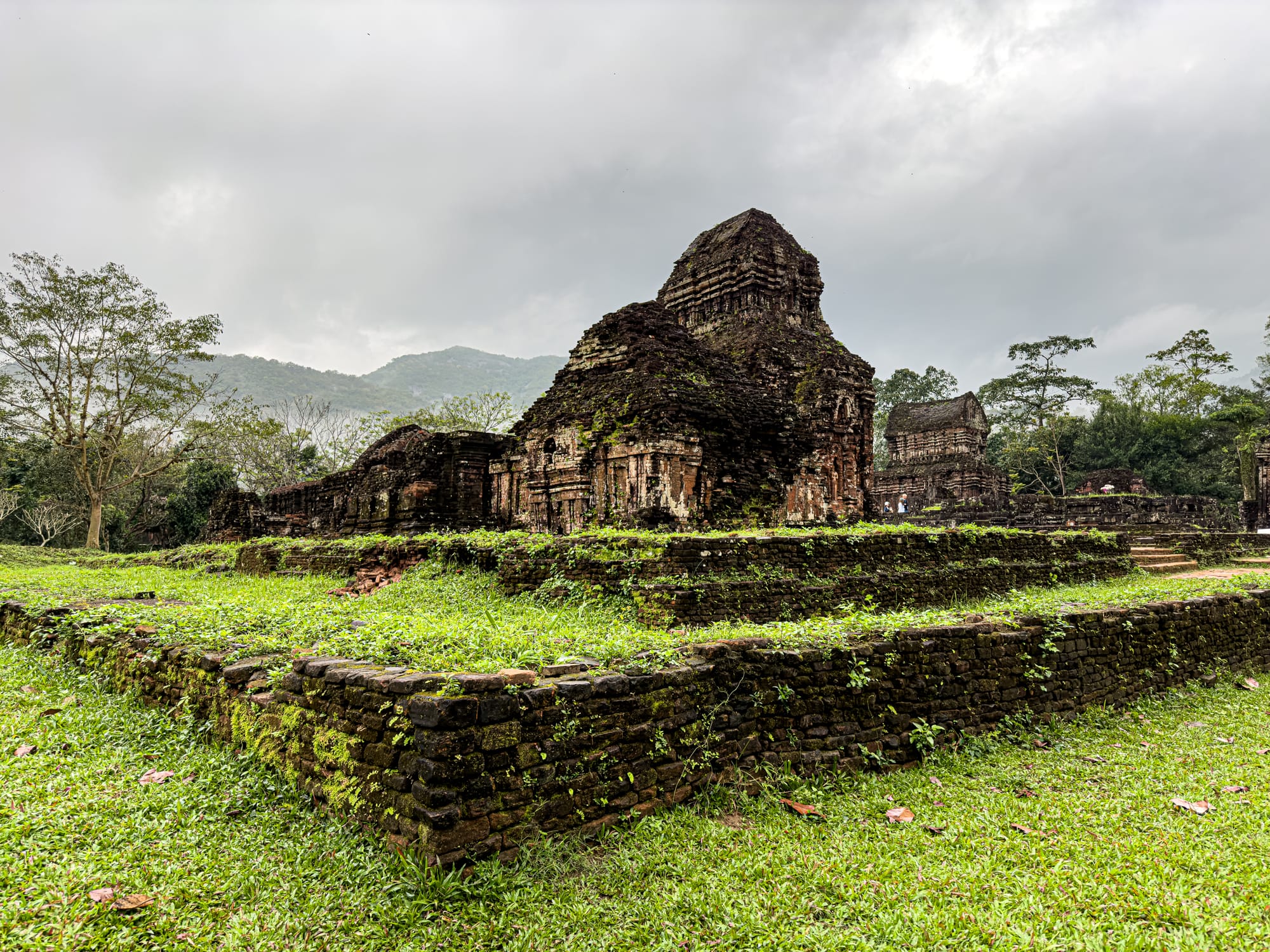
What strikes you first is the quiet. Even with other visitors around, the valley has a hushed quality, as if it still remembers its sacred function. The ruins are not polished or reconstructed beyond recognition; they stand with their age intact, bearing the marks of both time and war. The moss and greenery are not intrusions but part of the beauty, making the sanctuary feel like an organism that continues to live.
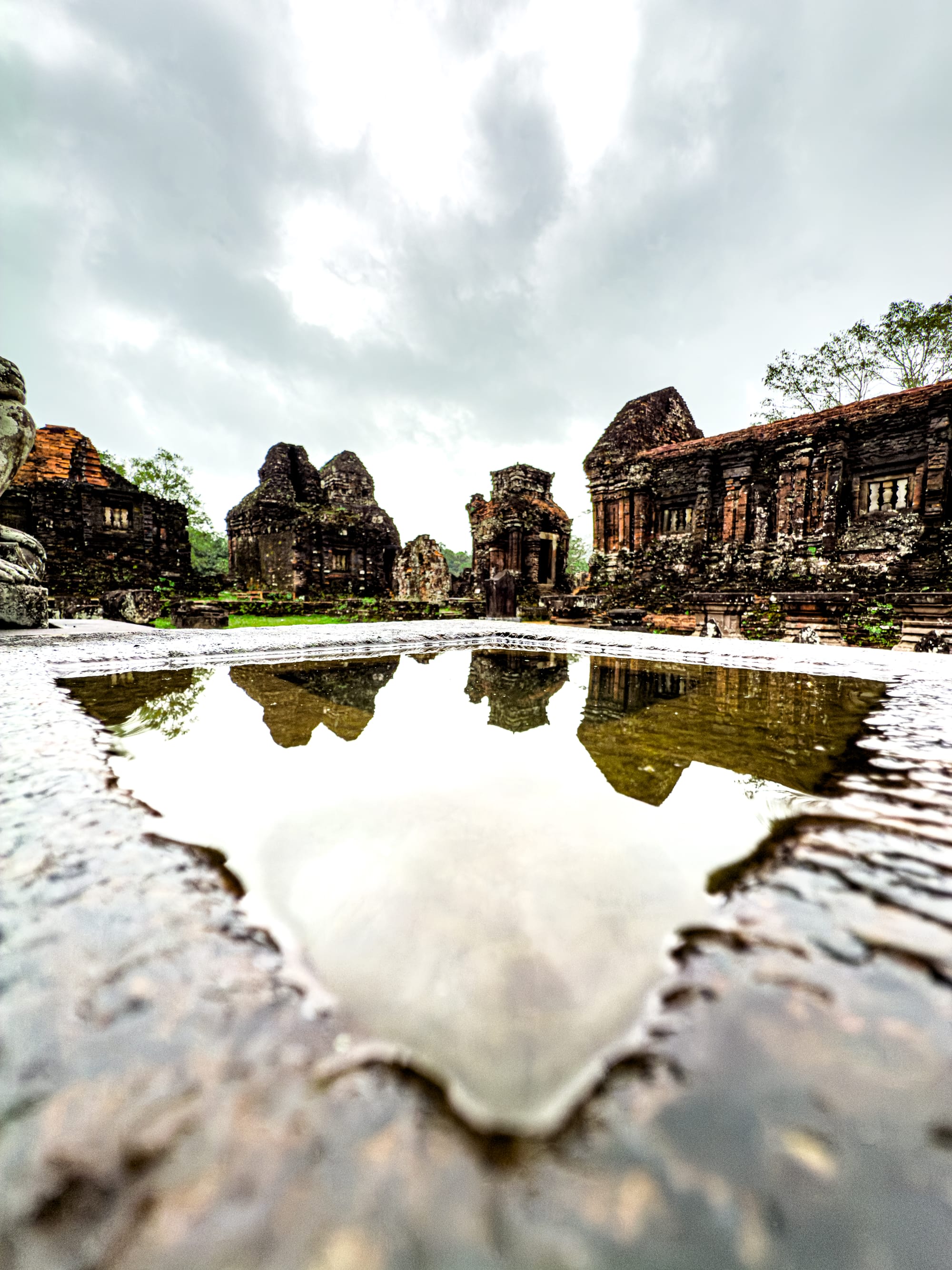
There is also a palpable sense of texture. The rough bricks, the cool stone carvings, the roots twining through foundations—all of it invites not just viewing but feeling.
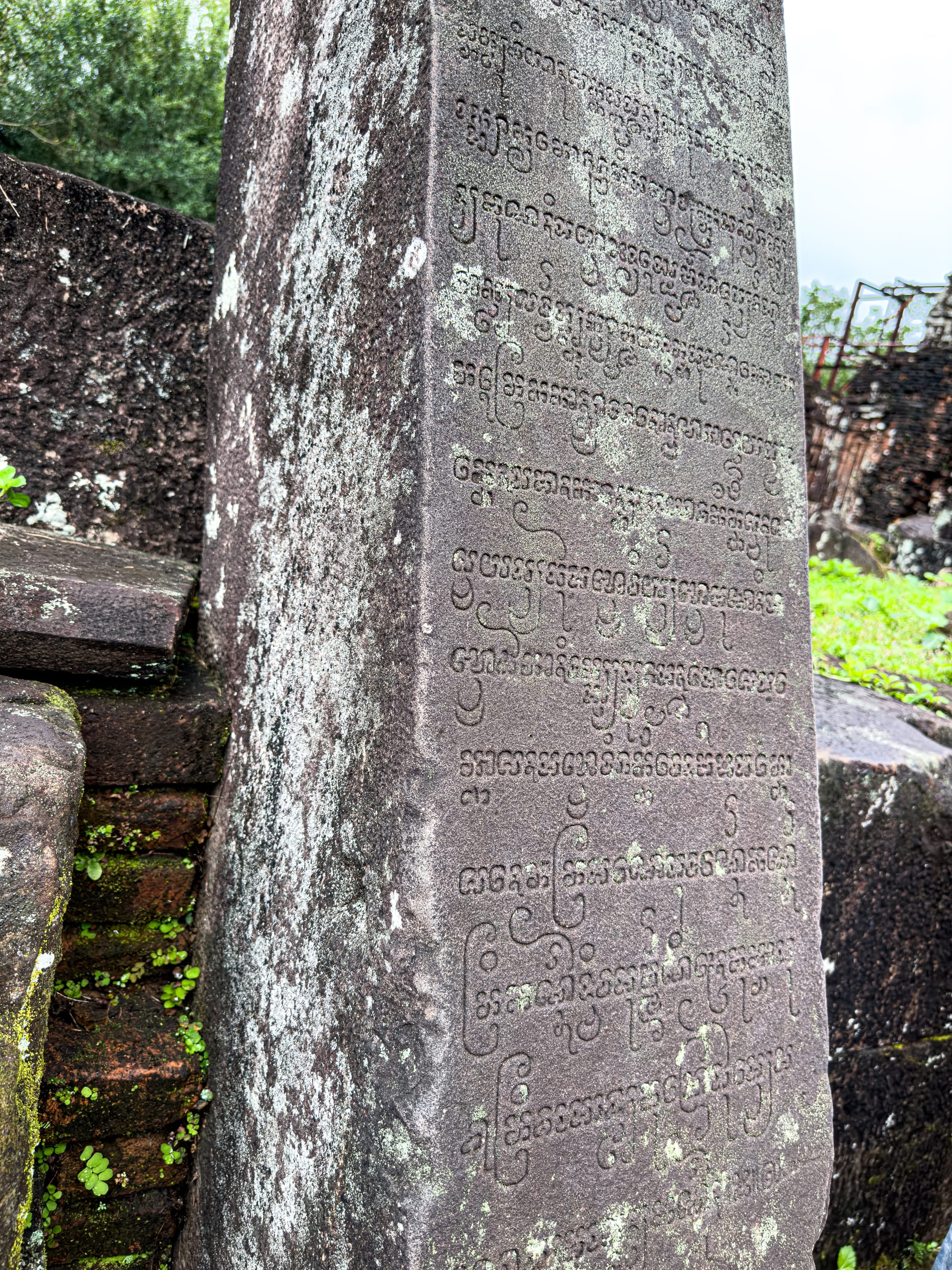
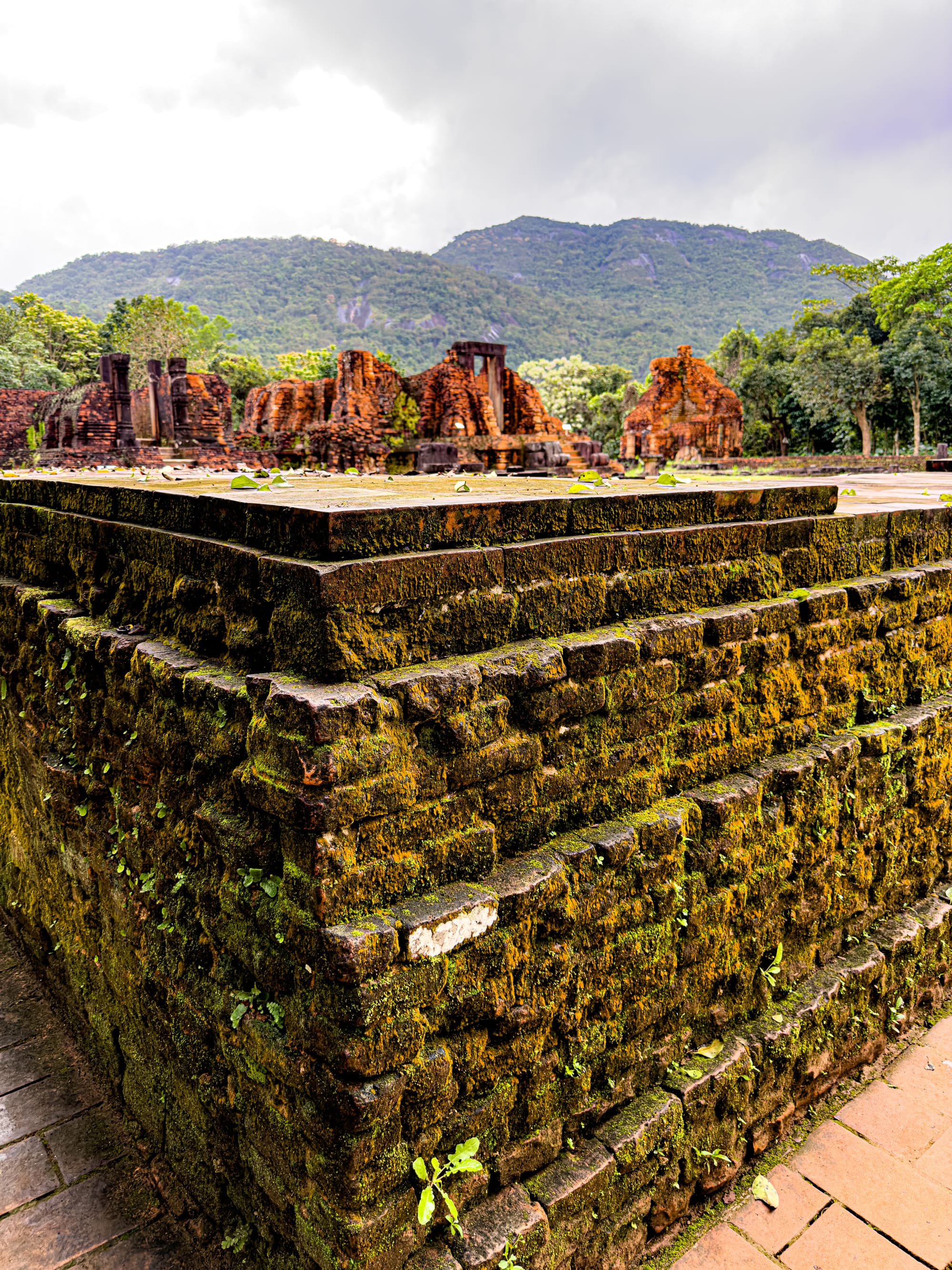
Inscriptions and moss-covered stones keeping memory alive in the sanctuary’s valley
To walk among Mỹ Sơn’s ruins is to walk inside layers of history and ecology intertwined.
The heart of the Champa kingdom
Mỹ Sơn was once the spiritual and political center of the Champa kingdom, which flourished between the 4th and 13th centuries. Dedicated to Hindu deities, especially Shiva, the temples were constructed from red brick using methods still not fully understood today—the mortar invisible, the joins tight, as if grown from the earth itself.
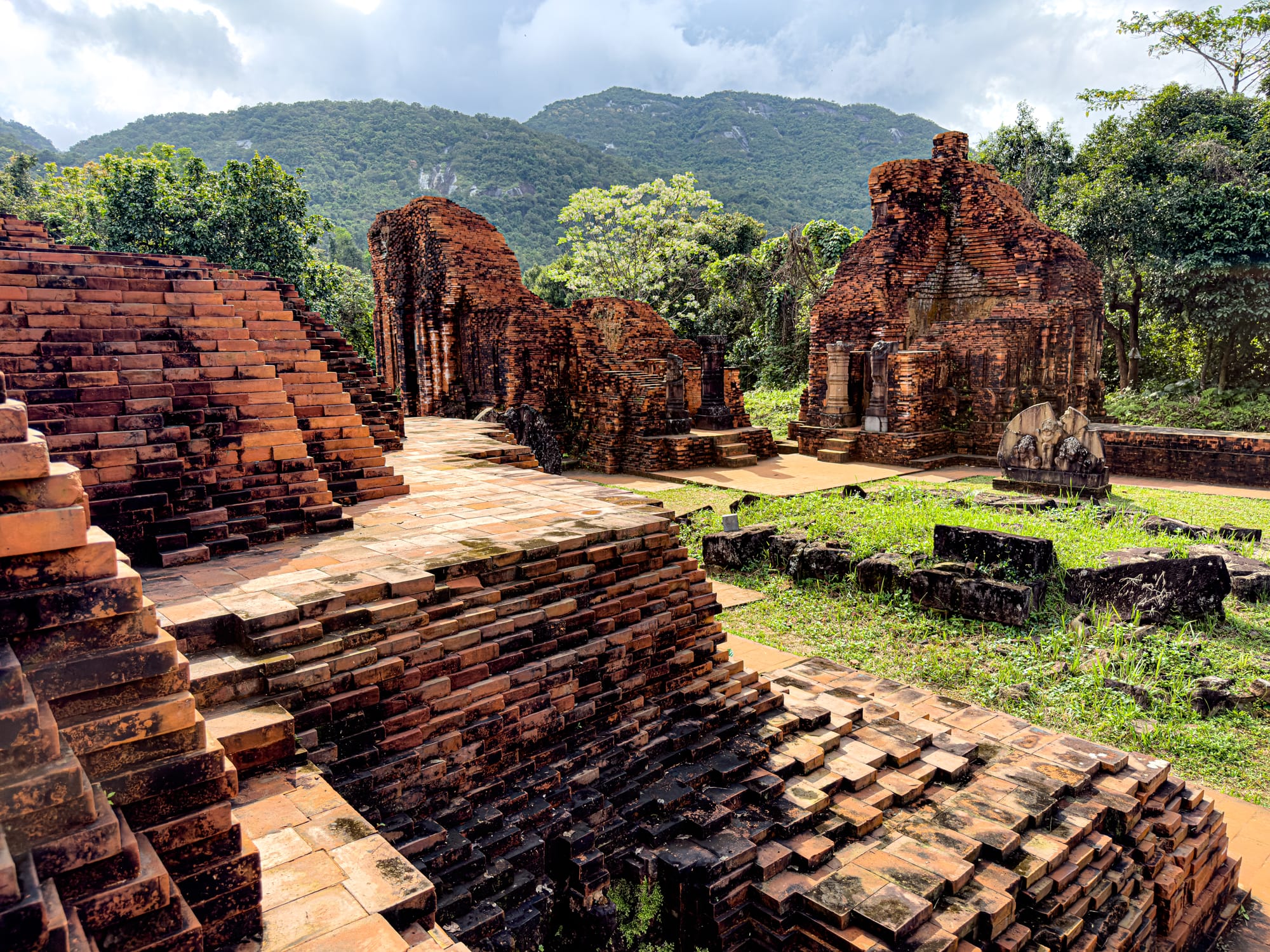
The Champa were a seafaring people, connected by trade routes that stretched across Southeast Asia and into India. Their architecture reflects this blending of influences: Hindu cosmology translated into local forms, Indian deities reimagined in Cham stonework, and rituals shaped by both imported and indigenous traditions. Mỹ Sơn, in its heyday, was not an isolated sanctuary but a node in a vast cultural web.
For Cham kings, Mỹ Sơn was more than a place of prayer—it was the beating heart of legitimacy. Dynasties were consecrated here, rulers sought divine favor, and the sanctuary’s very presence affirmed their place in both earthly and cosmic order.
A place of ritual and kingship
For nearly a millennium, Cham kings came to Mỹ Sơn to worship, perform sacred rituals, and mark dynastic milestones. The sanctuary was more than a religious site; it was a political stage, reinforcing power through connection with the divine.
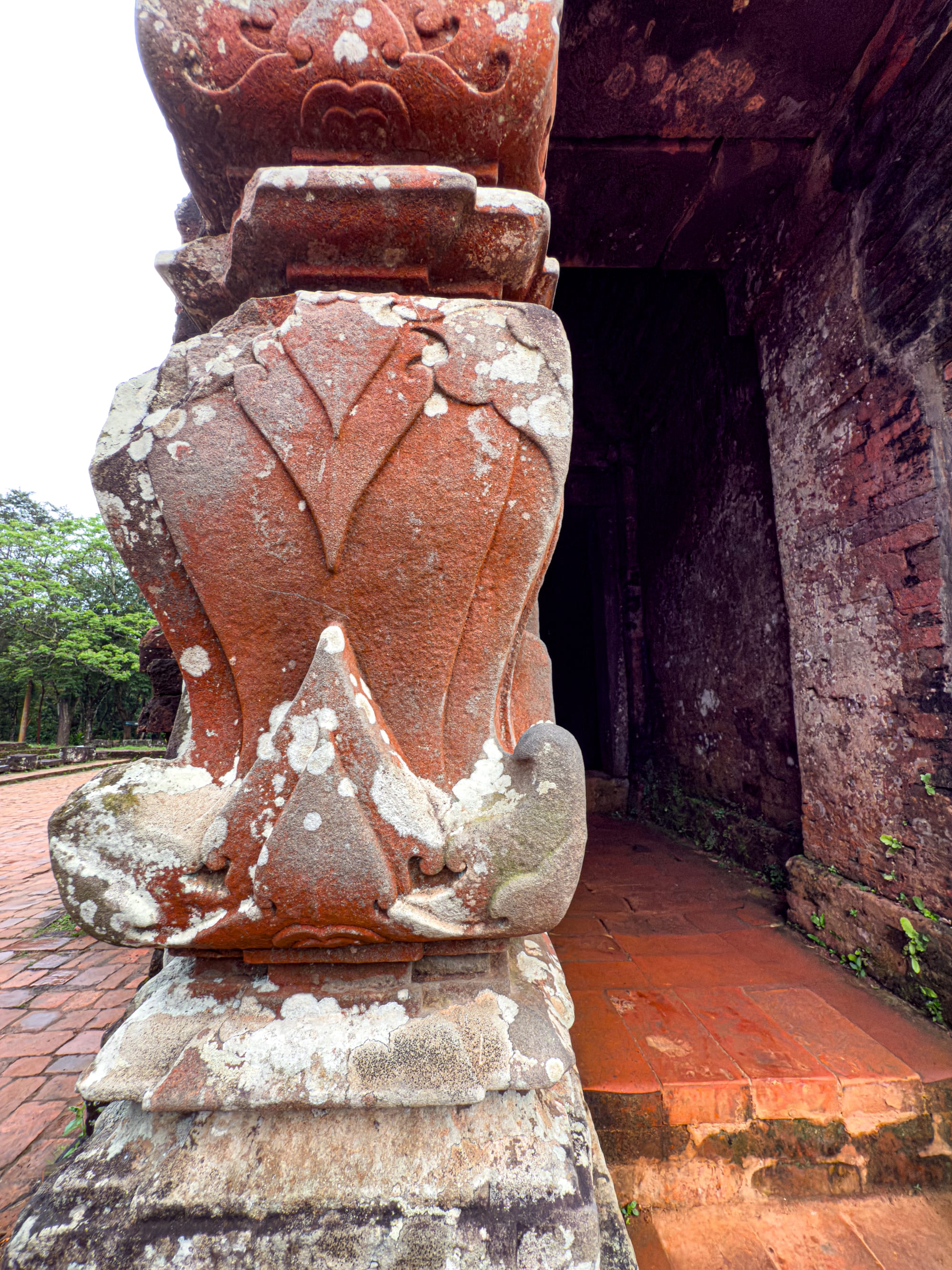
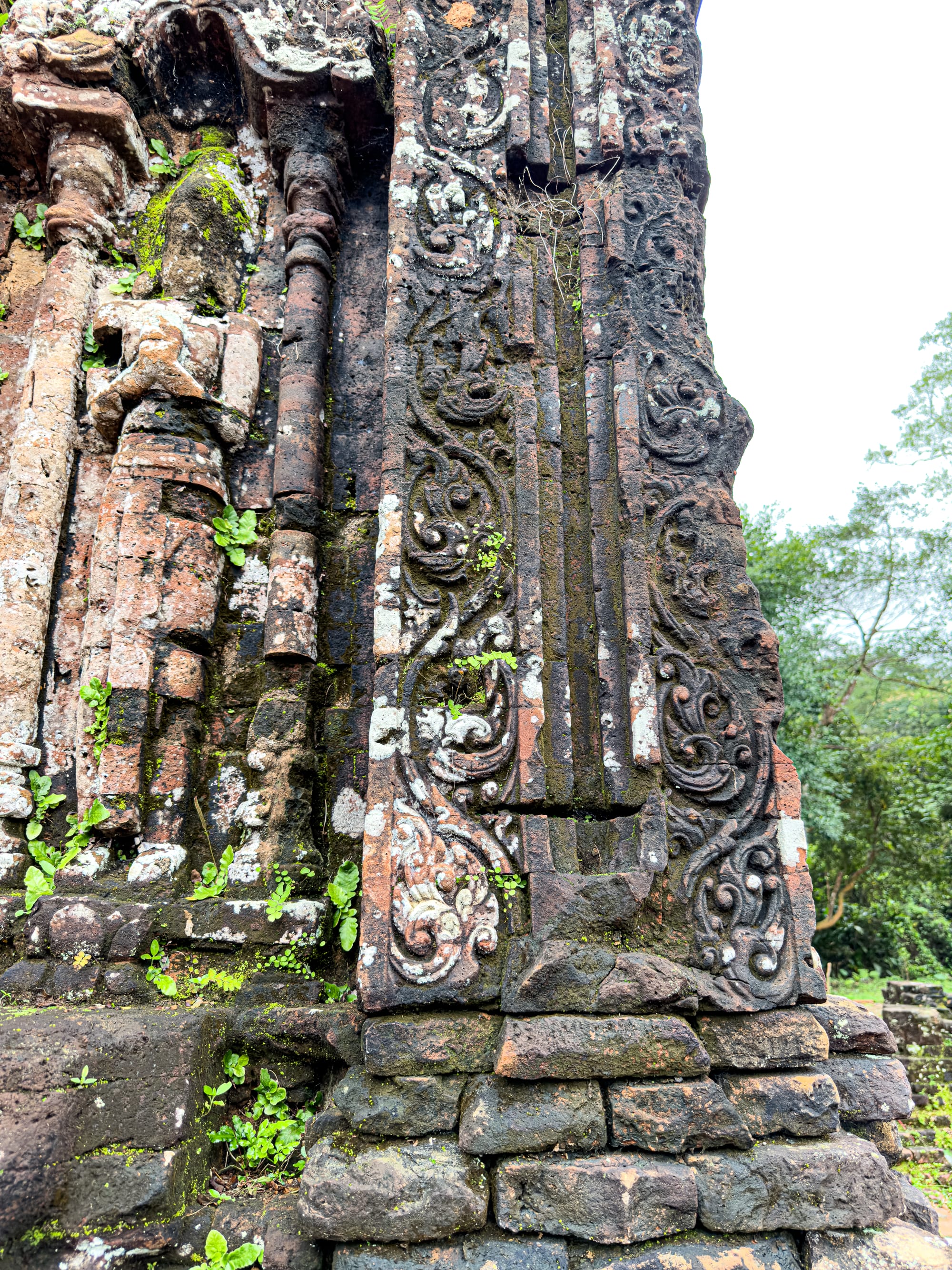
Weathered carvings and sacred details etched into the sanctuary’s ancient stone walls
Each temple was dedicated to a deity, with Shiva reigning supreme, often represented by the lingam and yoni, symbols of fertility and cosmic creation. Ceremonies would have filled the valley with music, incense, and offerings, transforming the quiet sanctuary we see today into a vibrant, resonant space alive with devotion.
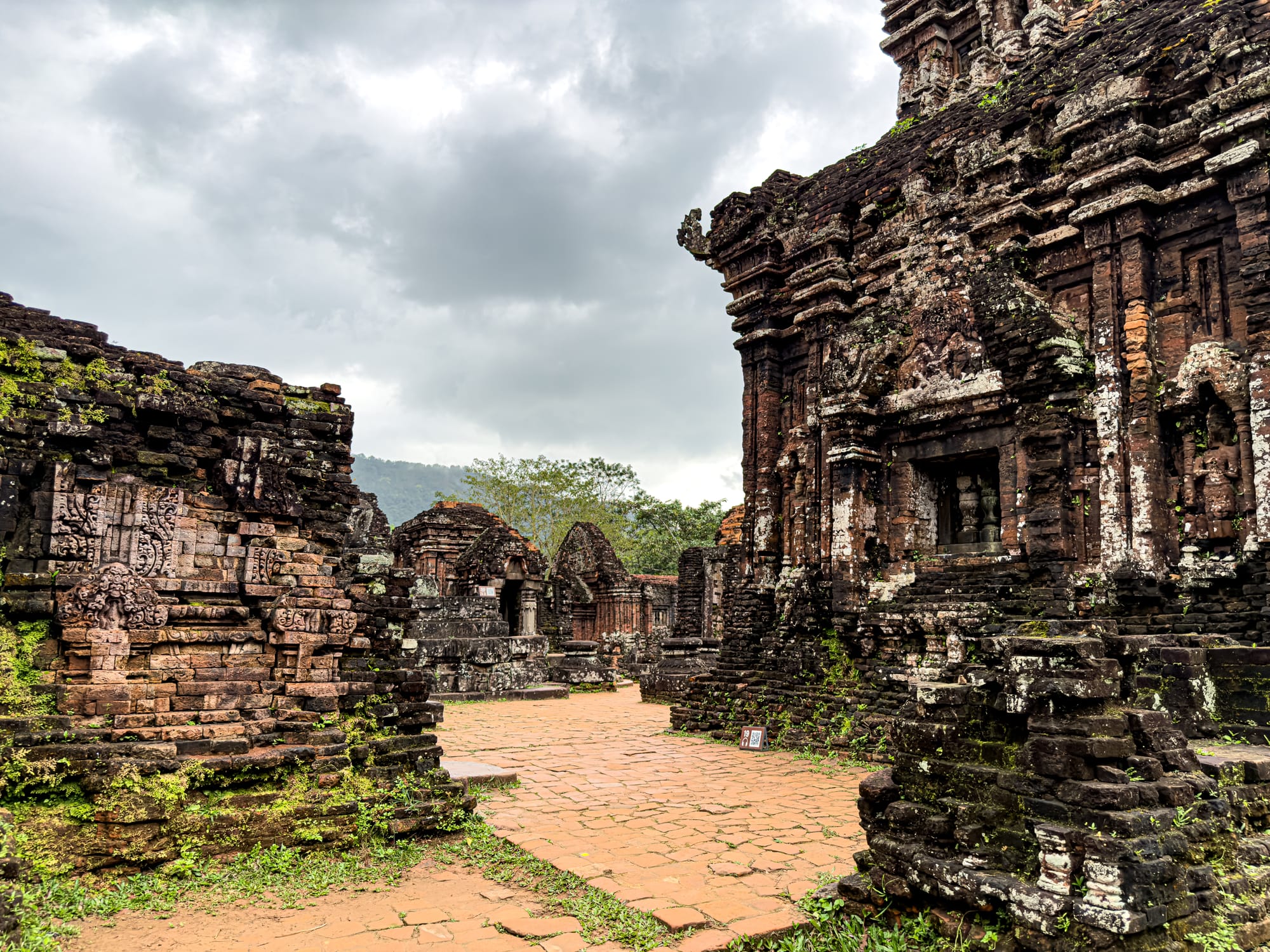
Priests and artisans lived here too, maintaining rituals, carving new statues, and preserving traditions. It was a living city of spirit, where politics and religion were inseparable, and where the line between human and divine blurred.
Destruction and loss
Mỹ Sơn suffered extensive damage during the Vietnam War, particularly from American bombings in the late 1960s. Entire clusters of temples were destroyed, leaving scars in the valley that remain visible today. What stands is only a fraction of the original grandeur, but even in ruin, the sanctuary radiates resilience and grace.
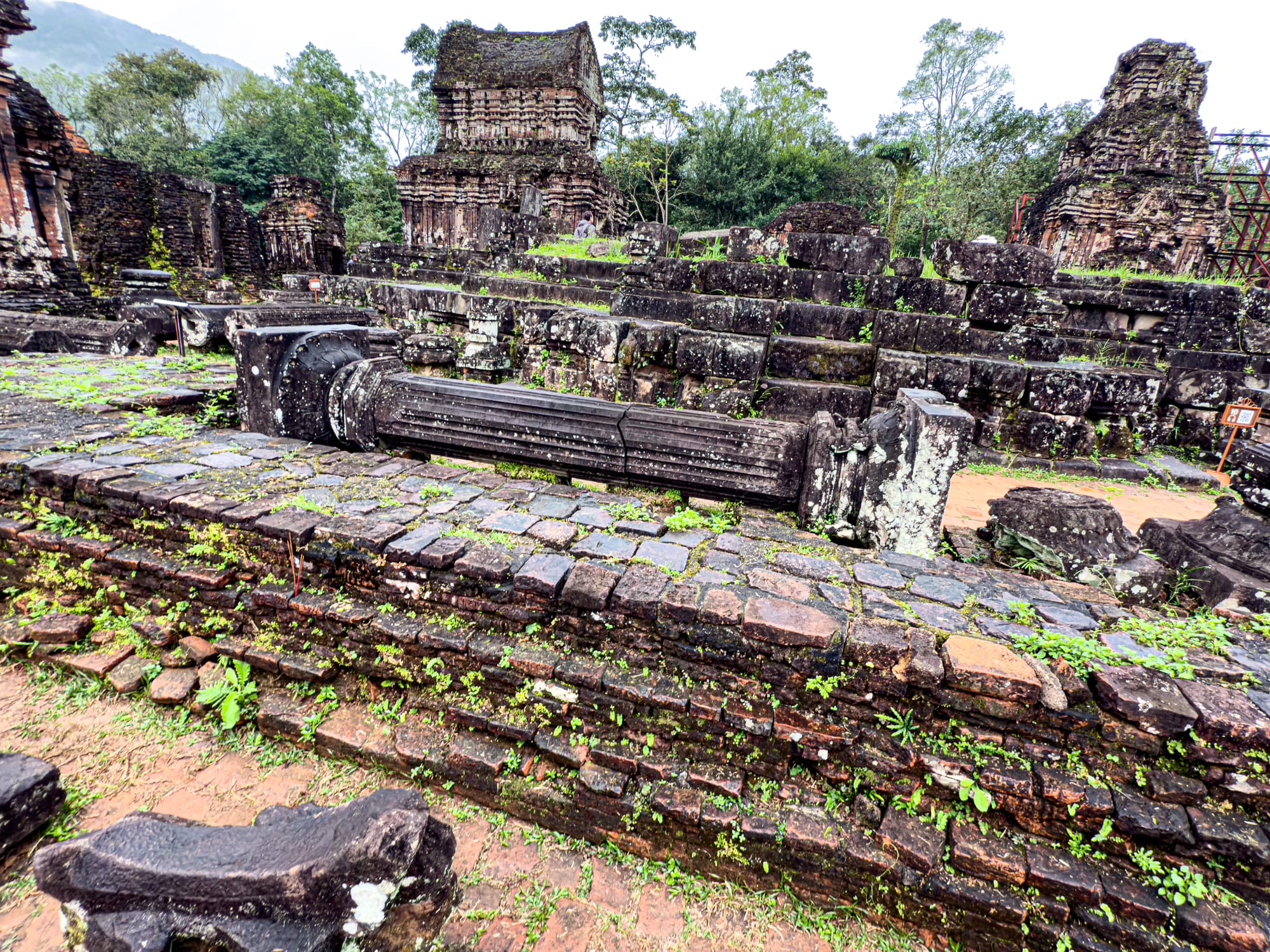
This destruction adds another layer to the experience of walking through Mỹ Sơn. The broken stones are not just evidence of time’s passage but of more recent wounds. The sanctuary carries the weight of both ancient collapse and modern violence, making its survival even more poignant.
UNESCO World Heritage recognition
In 1999, Mỹ Sơn was declared a UNESCO World Heritage Site. The designation acknowledges both its cultural significance and its vulnerability. Ongoing preservation work seeks to stabilize structures and protect the delicate carvings from weather and vegetation.
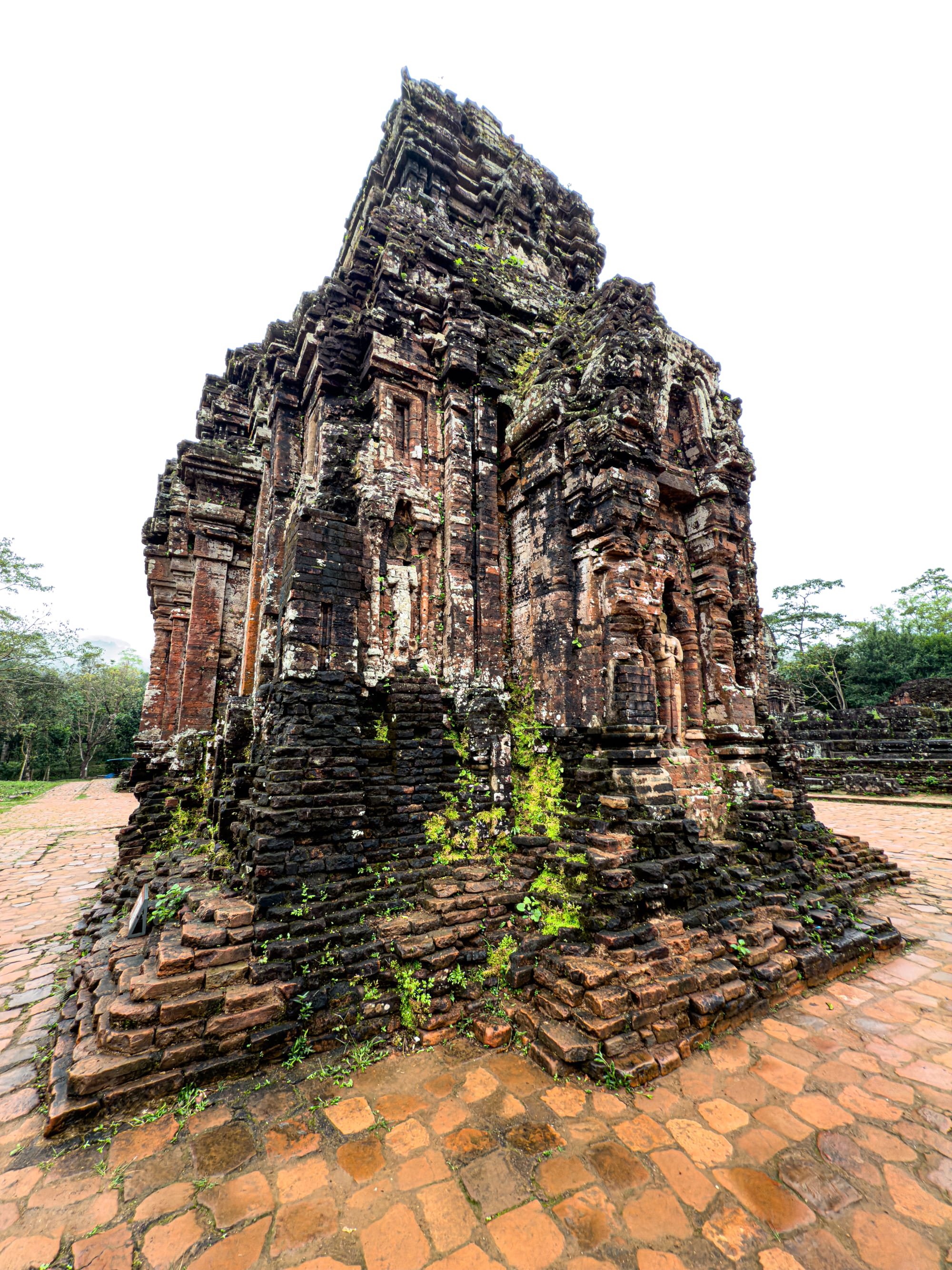
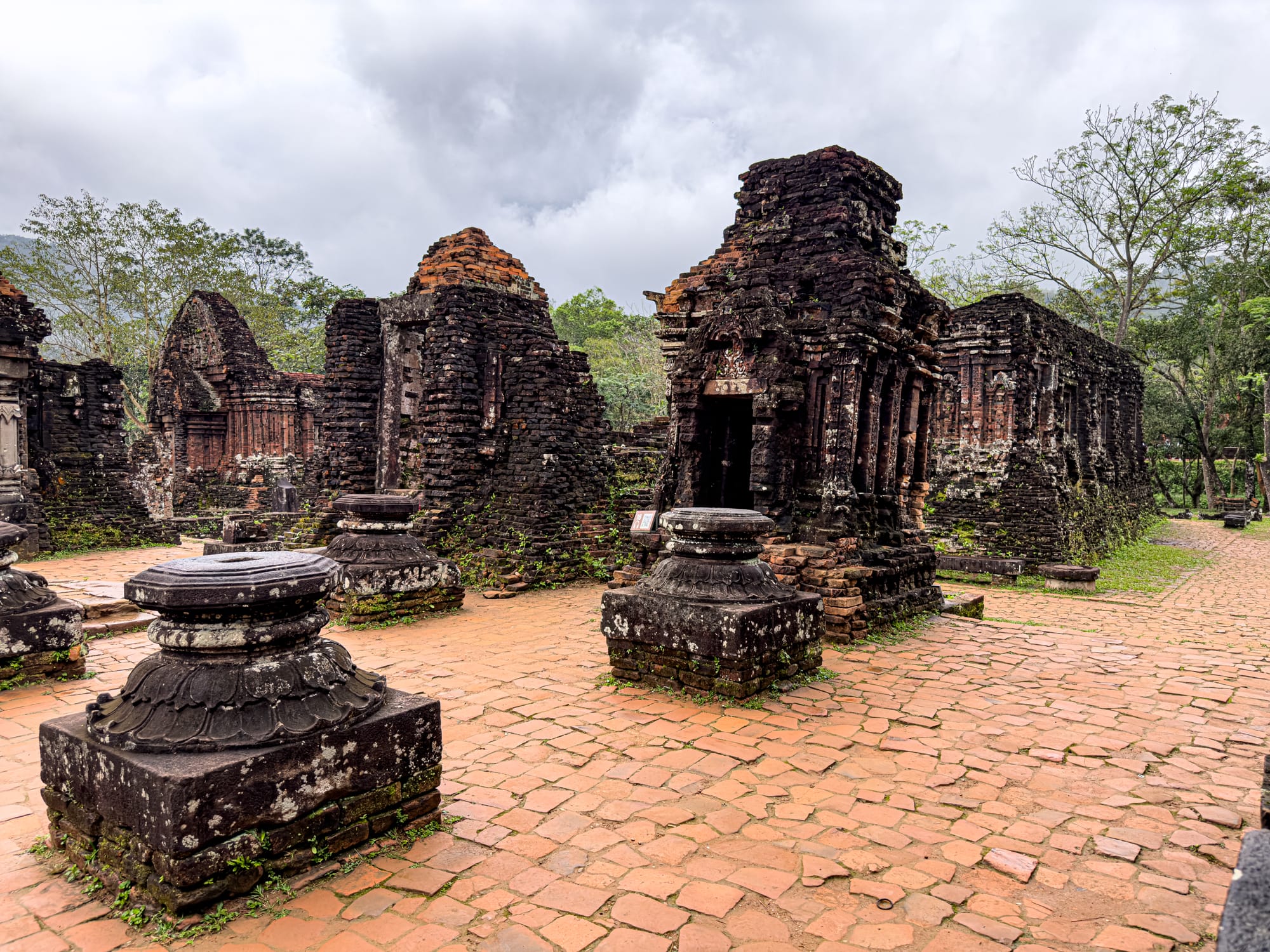
Towering relics and temple foundations marking the sacred heart of the Cham kingdom
Teams of archaeologists and conservators continue to work at the site, carefully balancing restoration with authenticity. Unlike some monuments that are heavily reconstructed, Mỹ Sơn’s preservation emphasizes honesty—what you see are real ruins, not replicas. This approach honors both the artistry of the Cham and the endurance of the sanctuary’s spirit.
Walking among the ruins
Each step at Mỹ Sơn reveals a different texture of time. Some temples stand tall, their doorways framed with intricate carvings of deities and dancers. Others are little more than mounds of scattered bricks, overtaken by roots and greenery. The contrast is haunting—a reminder of both the sanctuary’s former glory and the fragility of cultural heritage.
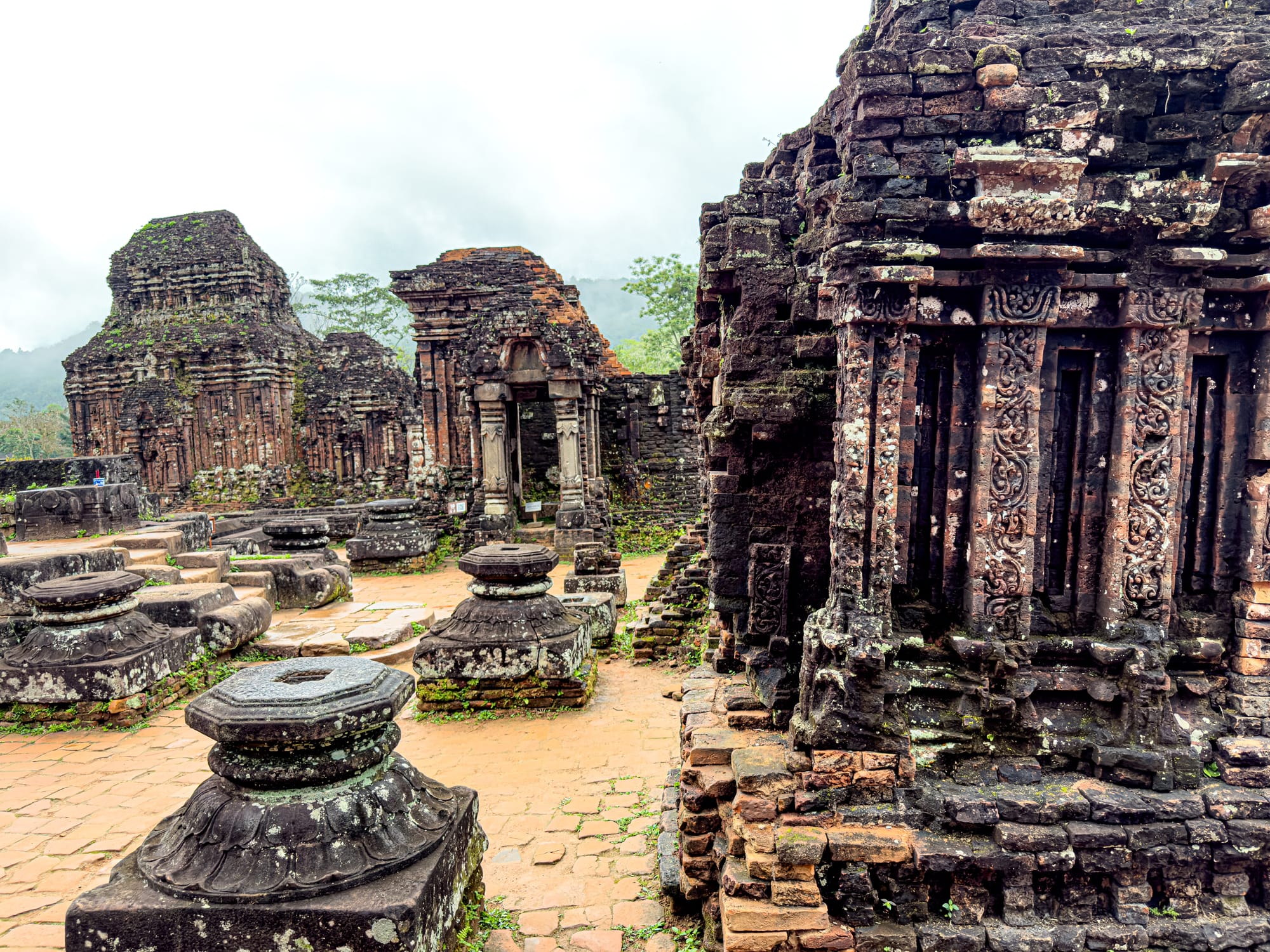
Lingams and yonis, sacred Hindu symbols, still sit in the heart of certain temples. Incense sticks and offerings left by modern visitors add another layer of continuity, connecting today’s wanderers with rituals centuries old.
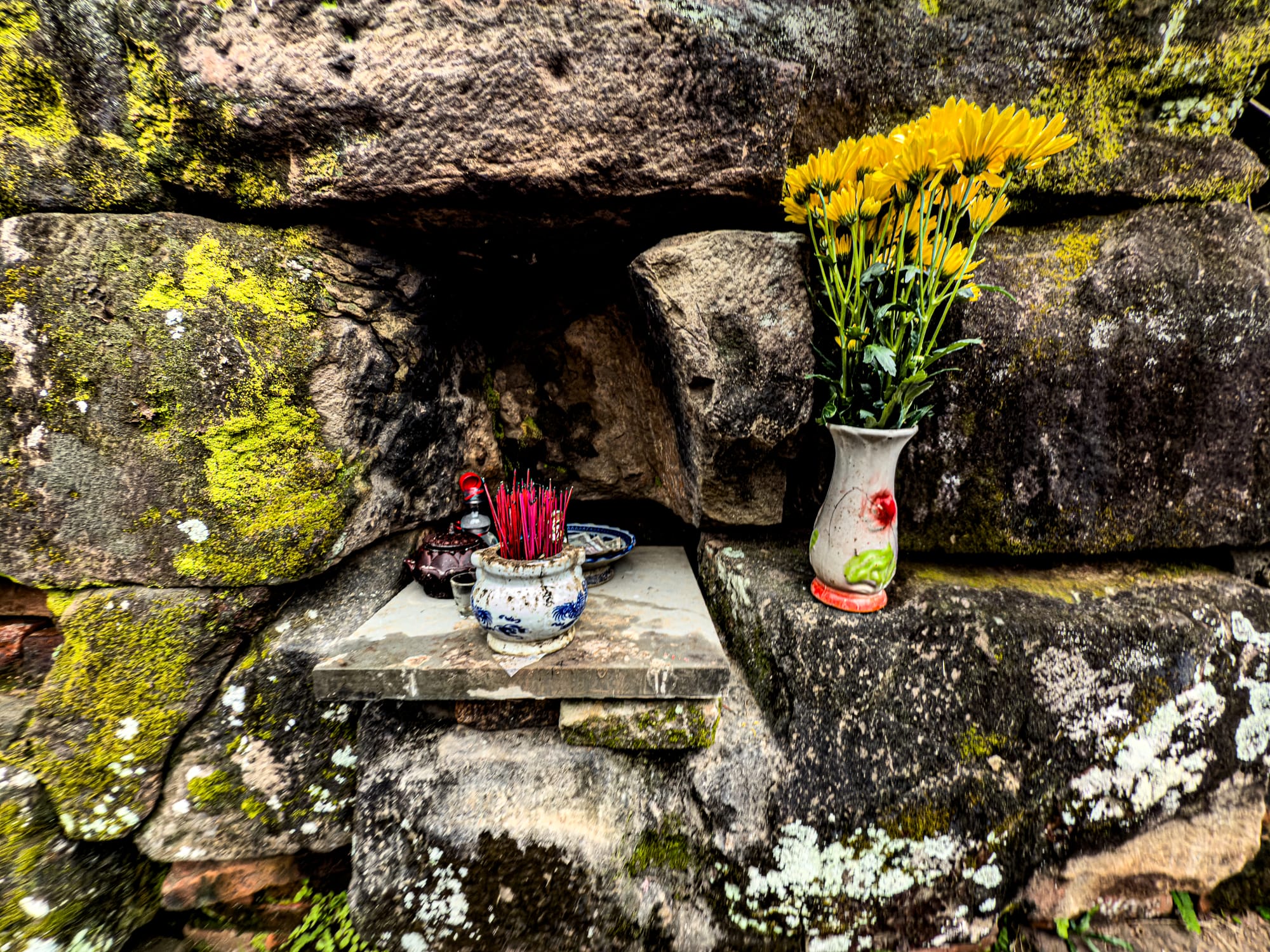
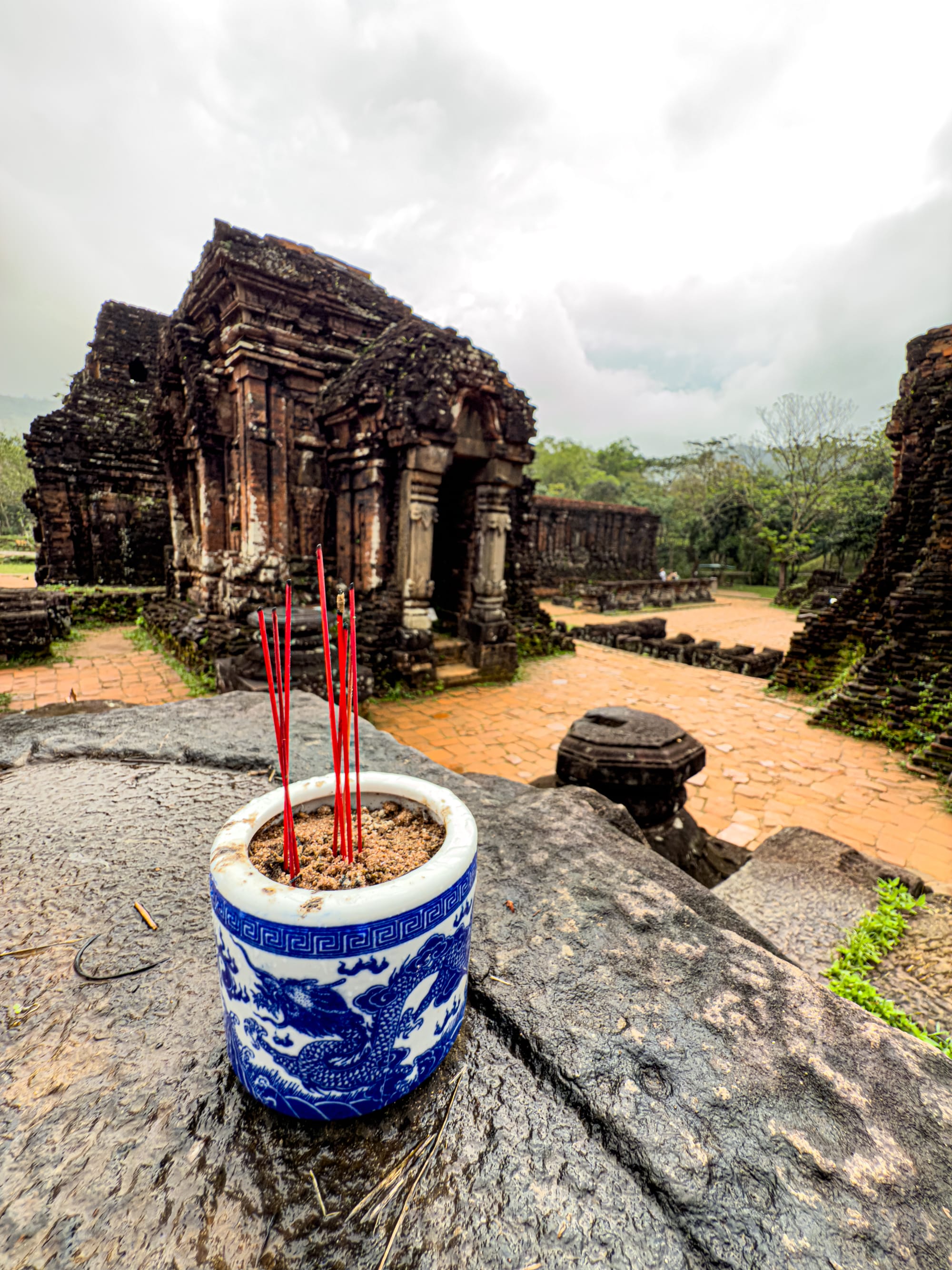
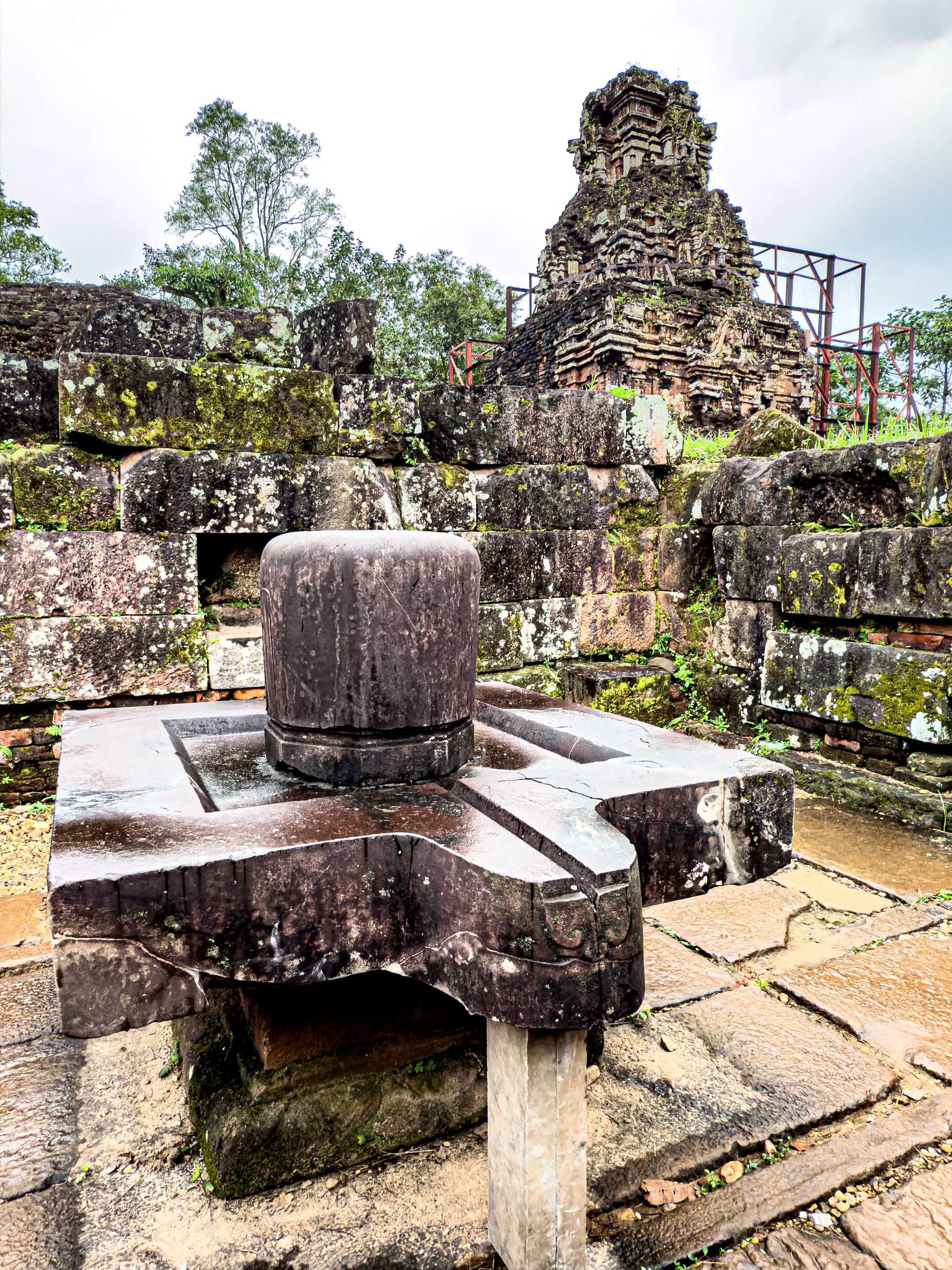
Incense and sacred symbols keeping ancient worship alive among the ruins
Moving between temple clusters, you notice how the landscape itself shapes the experience. Some groups are enclosed by trees, creating intimate chambers of shade and shadow. Others open onto wide clearings where the ruins rise against the sky, their outlines stark and commanding.
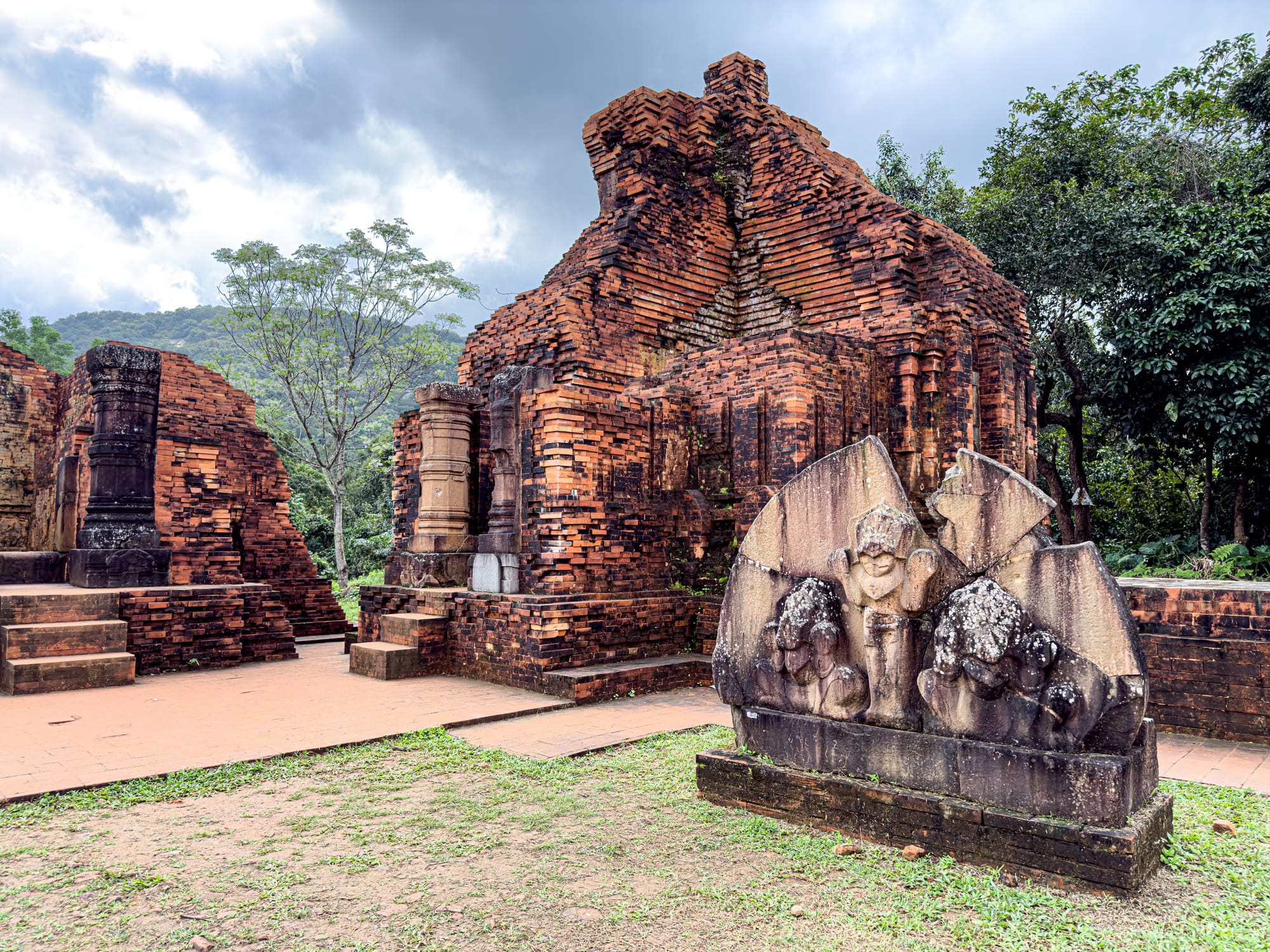
There is no single way to move through Mỹ Sơn. Some walk quickly, pausing only for photographs. Others linger, tracing carvings with their eyes, imagining the hands that shaped them centuries ago.
Details in brick and stone
One of Mỹ Sơn’s most mesmerizing qualities is its craftsmanship. Cham builders fashioned towers with soaring spires and relief carvings that echo Hindu cosmology. Figures of Shiva, Vishnu, and Apsaras once adorned the walls, and even in weathered fragments, the artistry feels alive.
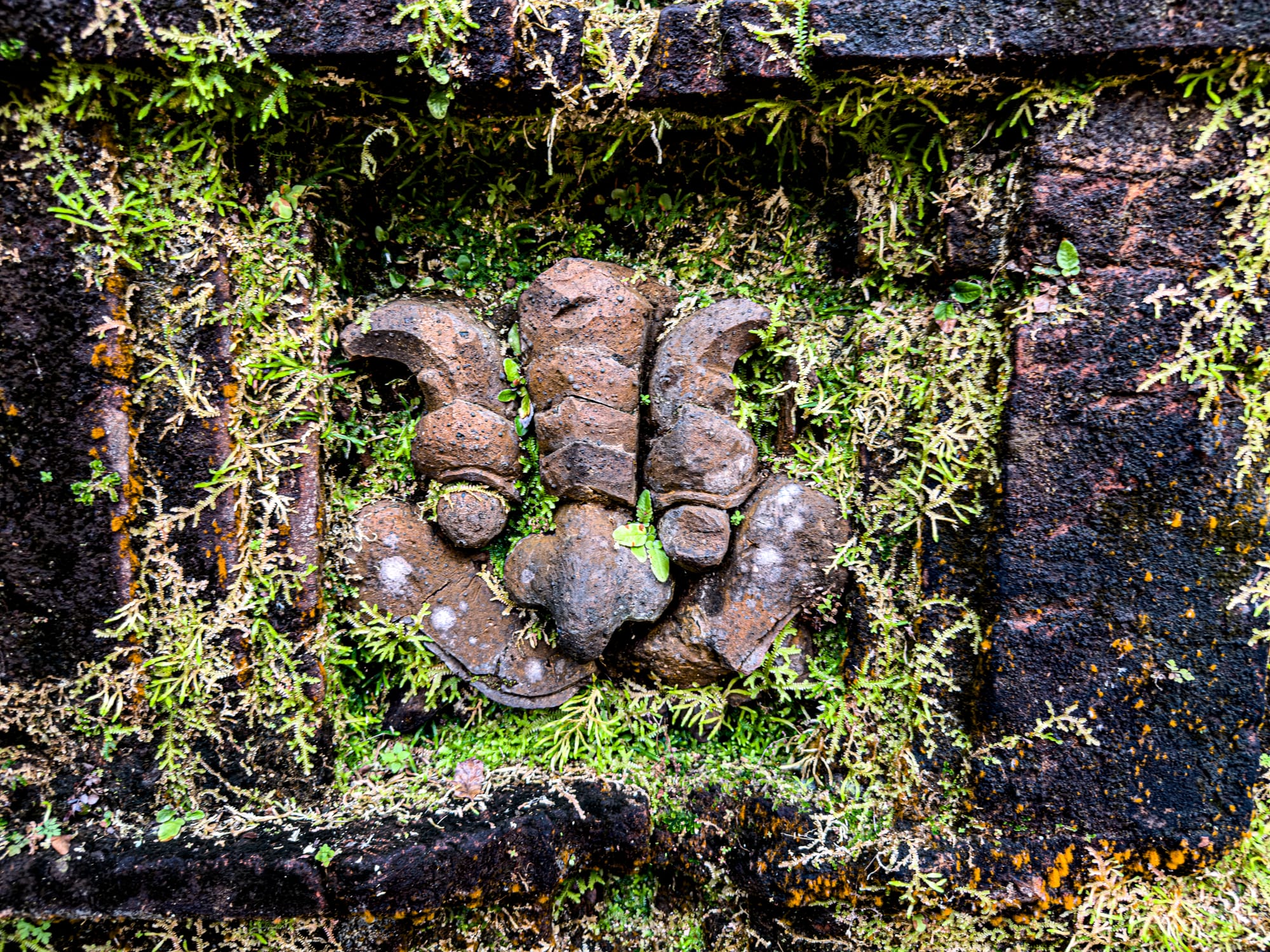
The bricks themselves are mysterious. Scholars still debate how they were bonded, as no mortar is visible. Some suggest a resin or natural adhesive, others believe in techniques now lost. Whatever the method, the result is a structure that has endured for centuries, resisting both time and tropical climate.
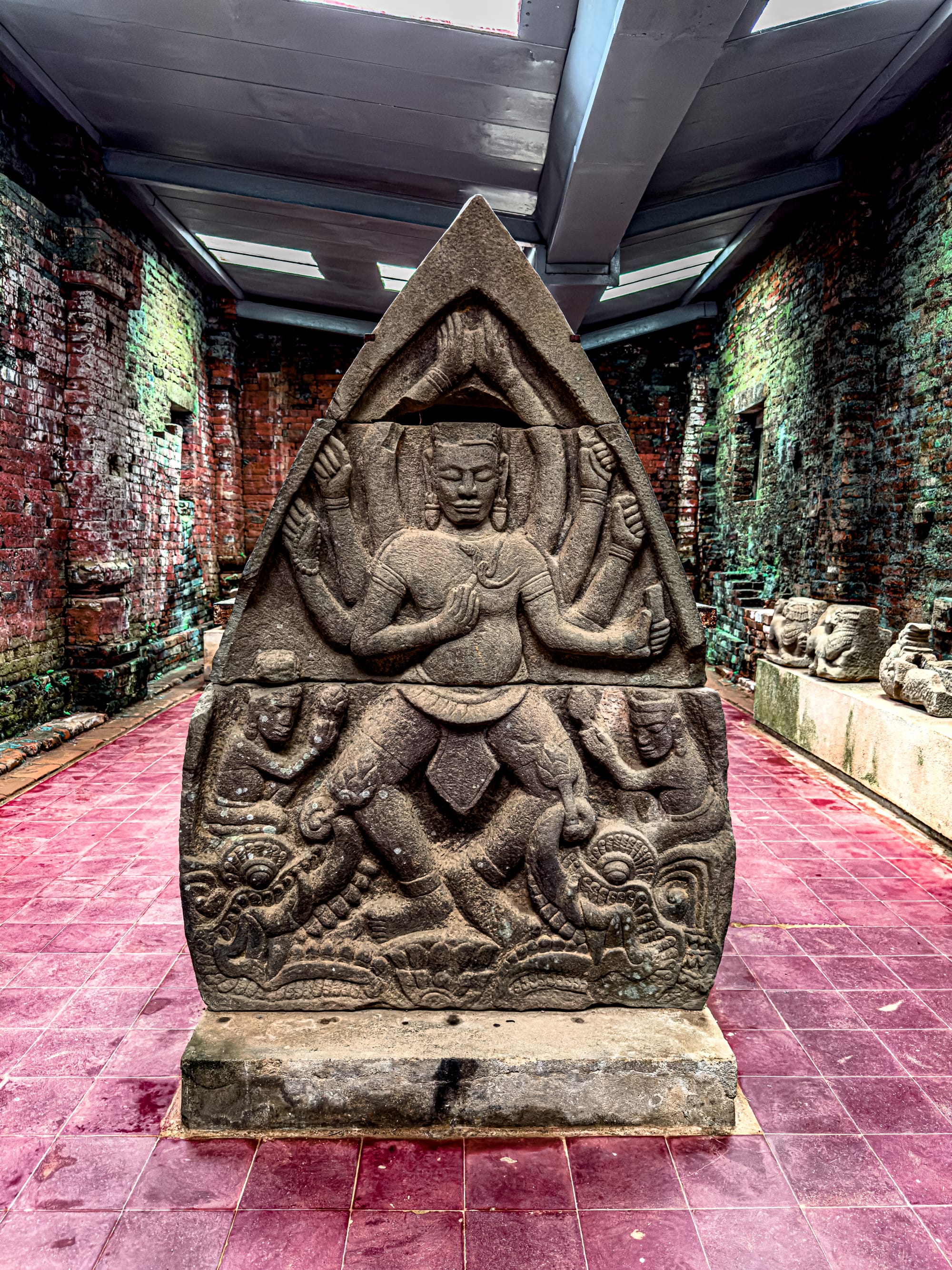
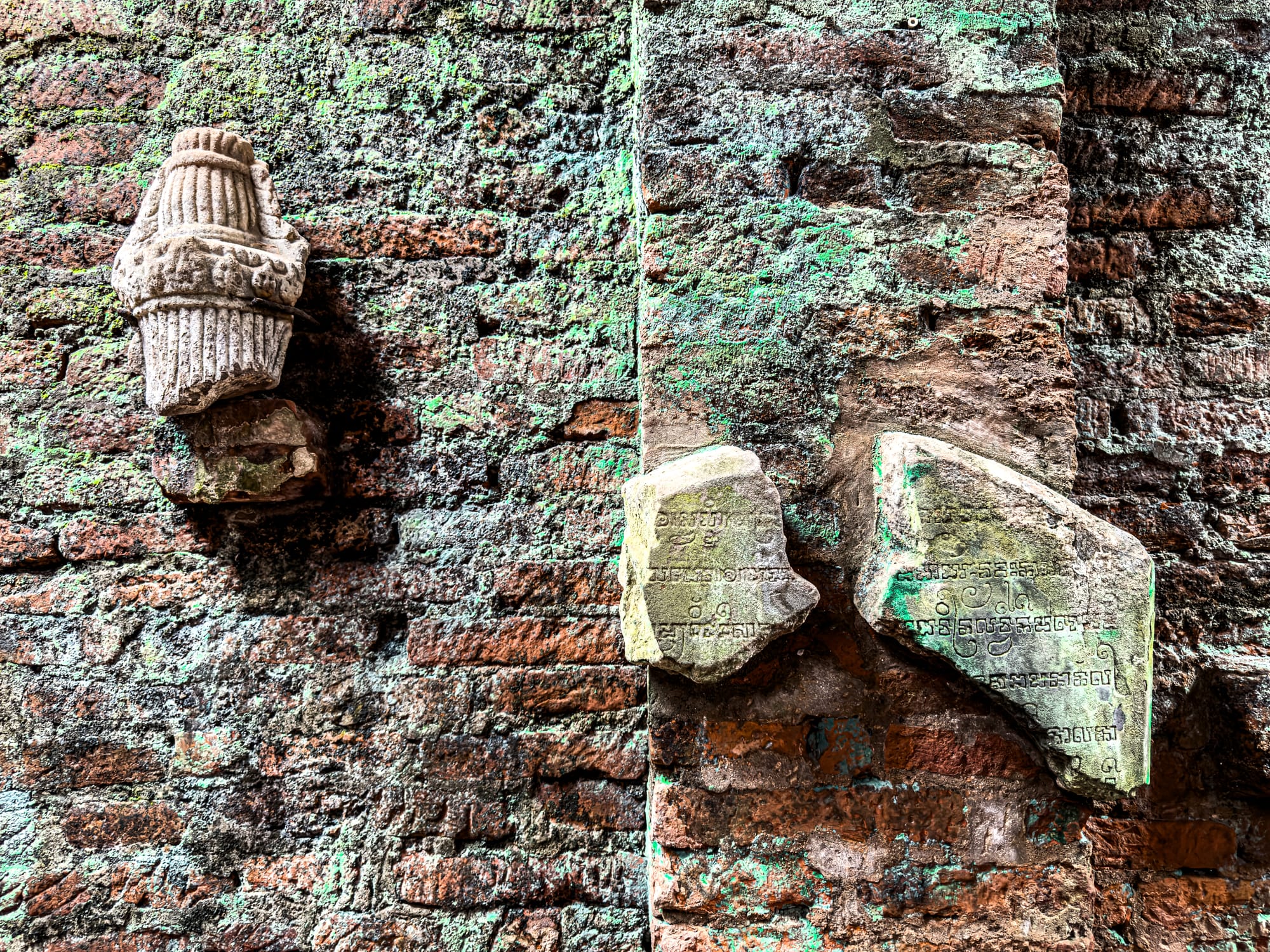
Fragments of devotion preserved in stone, echoes of the Cham kingdom’s artistry
Look closely at the details and you’ll find symbols layered with meaning. Serpents coil along the base of altars, dancers leap across lintels, floral motifs climb walls like living vines. These are not decorations alone—they are cosmological maps, guiding the viewer from earthly concerns toward divine realms.
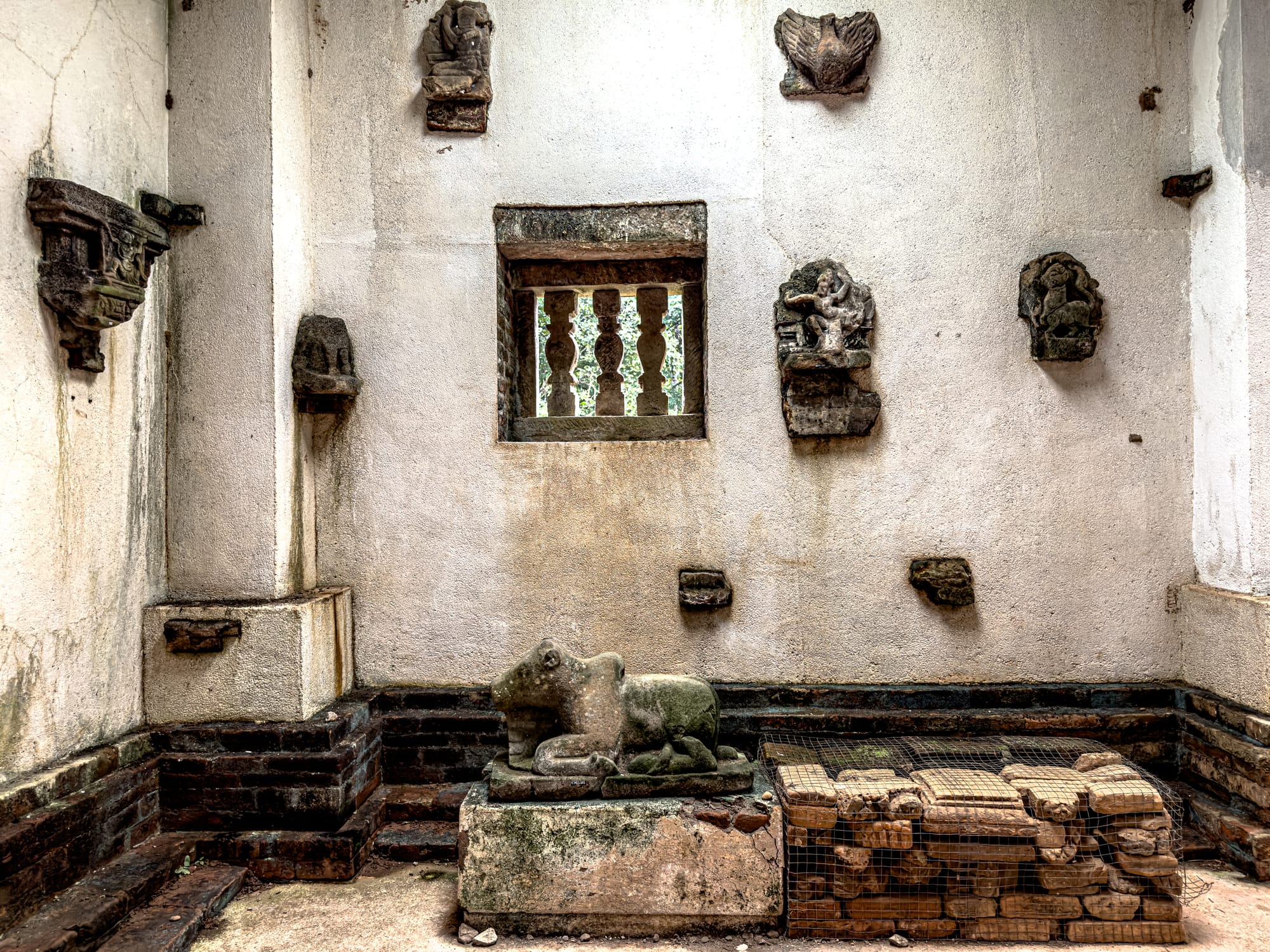
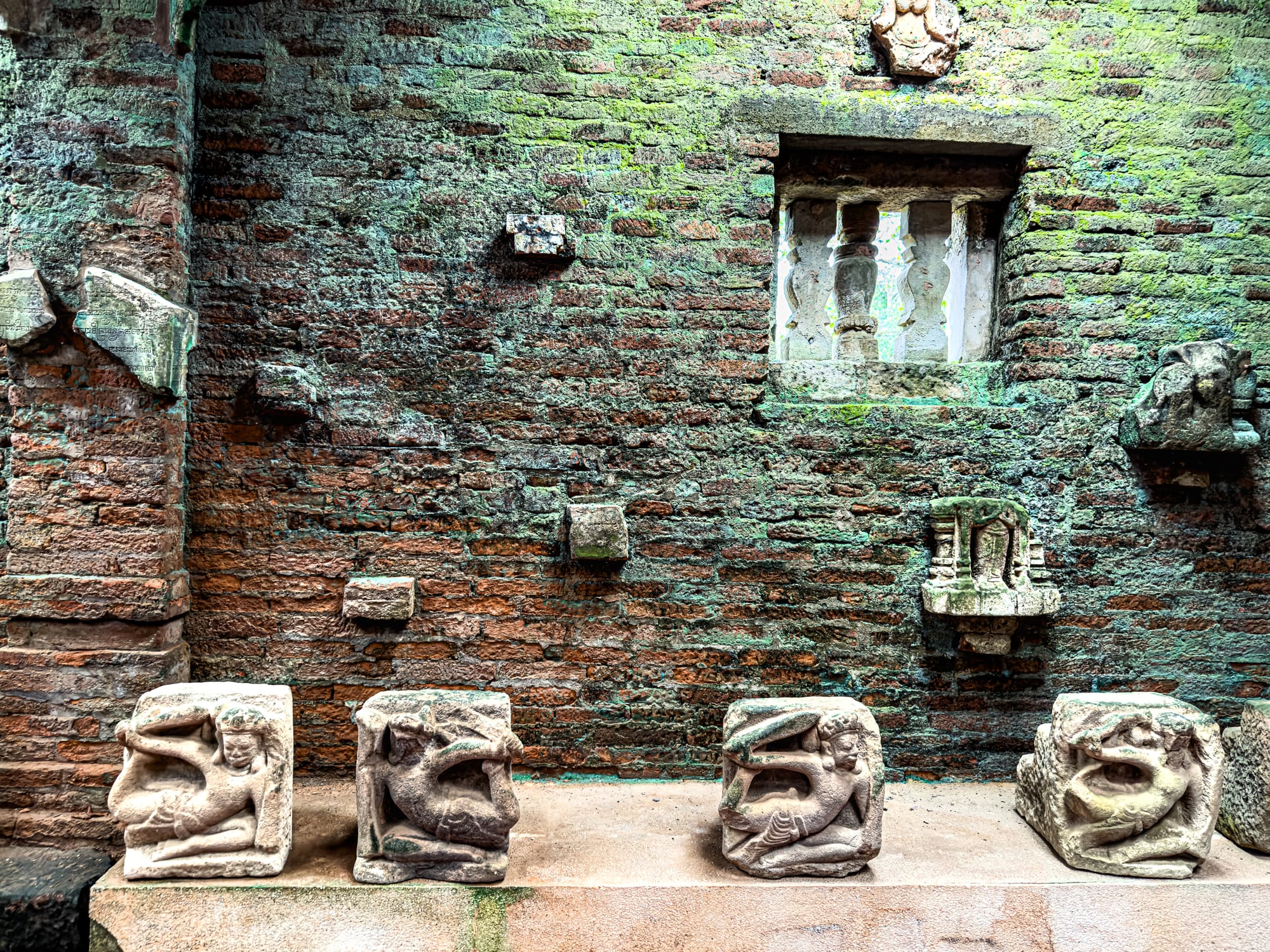
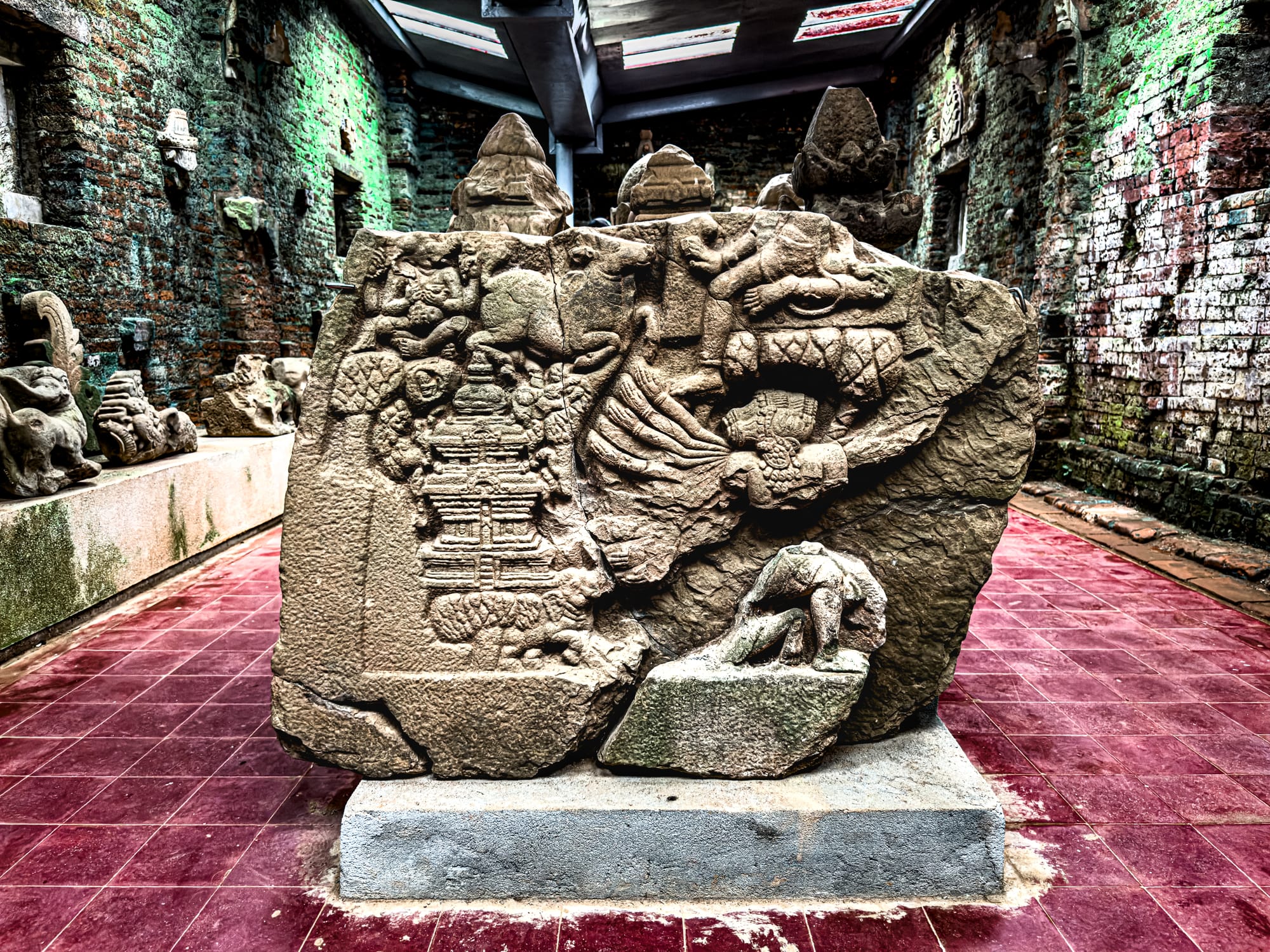
Carved figures and sacred fragments telling stories of the Cham past
The moss-covered surfaces only heighten the beauty. Green and red intermingle, creating a living palette that shifts with the light. For photographers and dreamers alike, every angle offers another detail to absorb.
The peaceful atmosphere
Despite being a popular destination, Mỹ Sơn retains a sense of tranquility. The valley is spacious, and visitors spread out between the temple groups. Birds dart through the trees, and the occasional bench invites you to pause in the shade. There’s a meditative quality to simply sitting among ruins, listening to wind rustle through the forest.
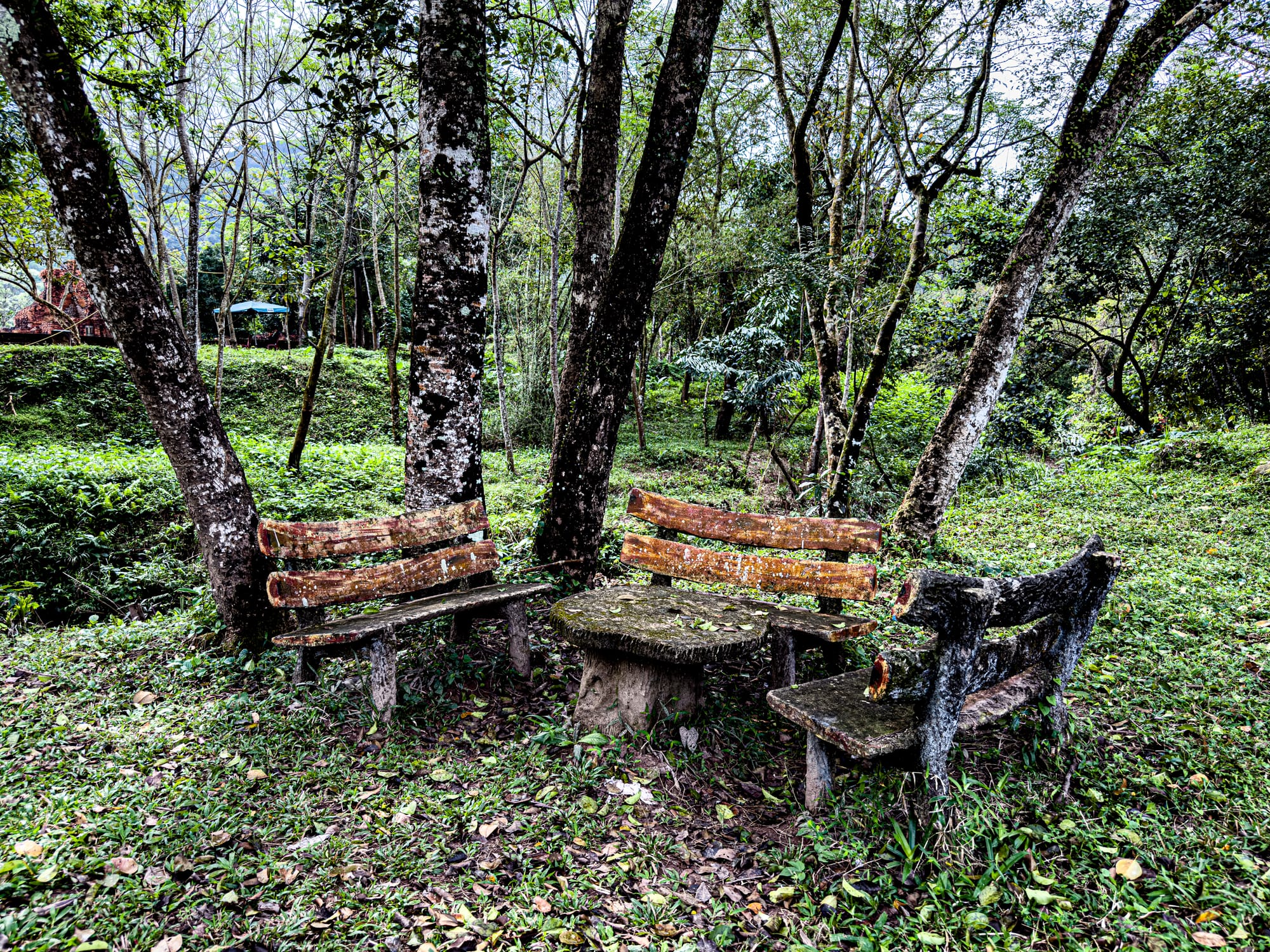
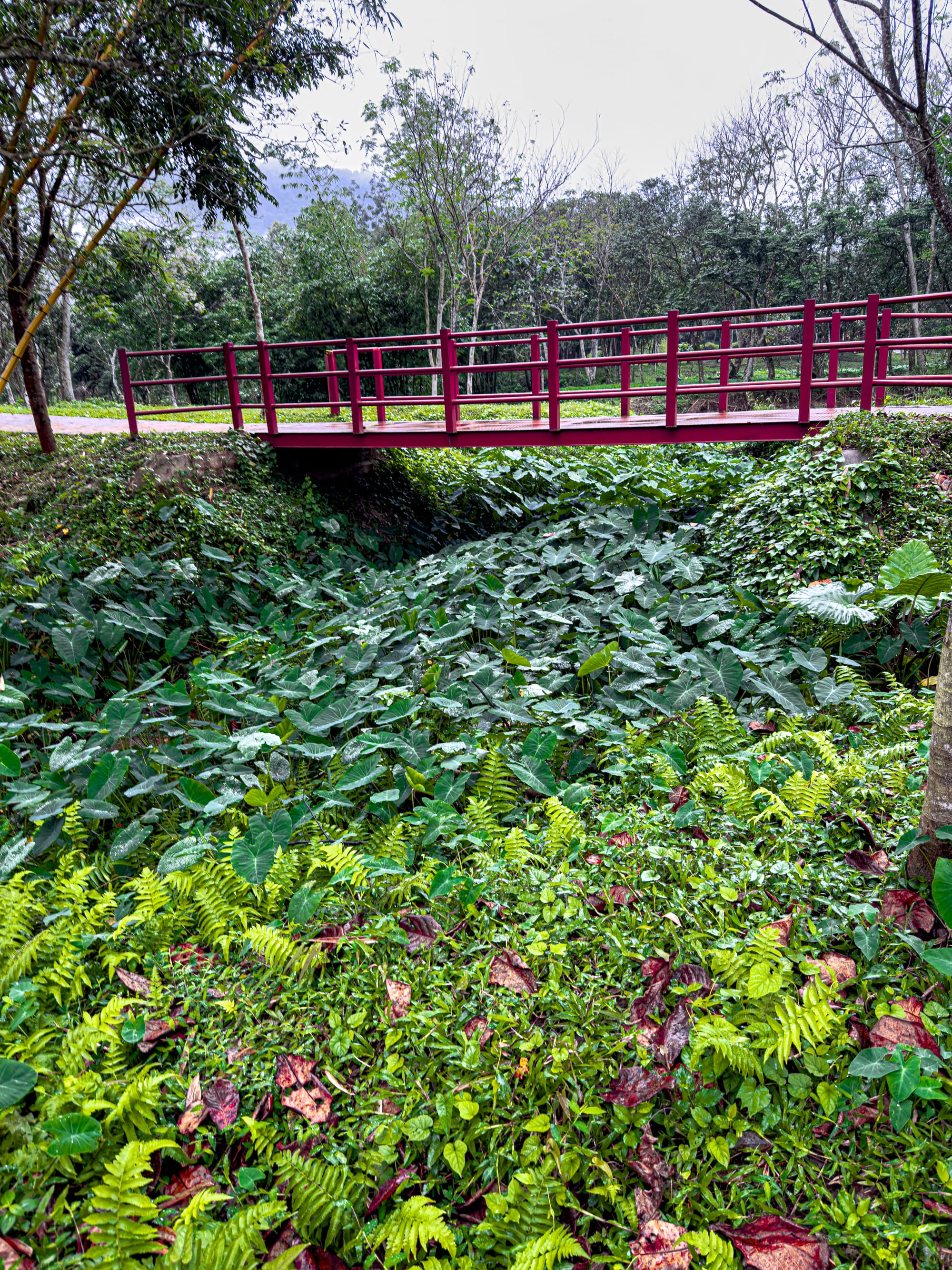
Quiet corners of the sanctuary where nature and stillness invite rest
It is not difficult to imagine how this atmosphere would have suited its original function. A sanctuary, by definition, is a place apart—set aside for reflection, prayer, and communion with forces greater than oneself. Even without rituals and priests, Mỹ Sơn continues to embody that essence.
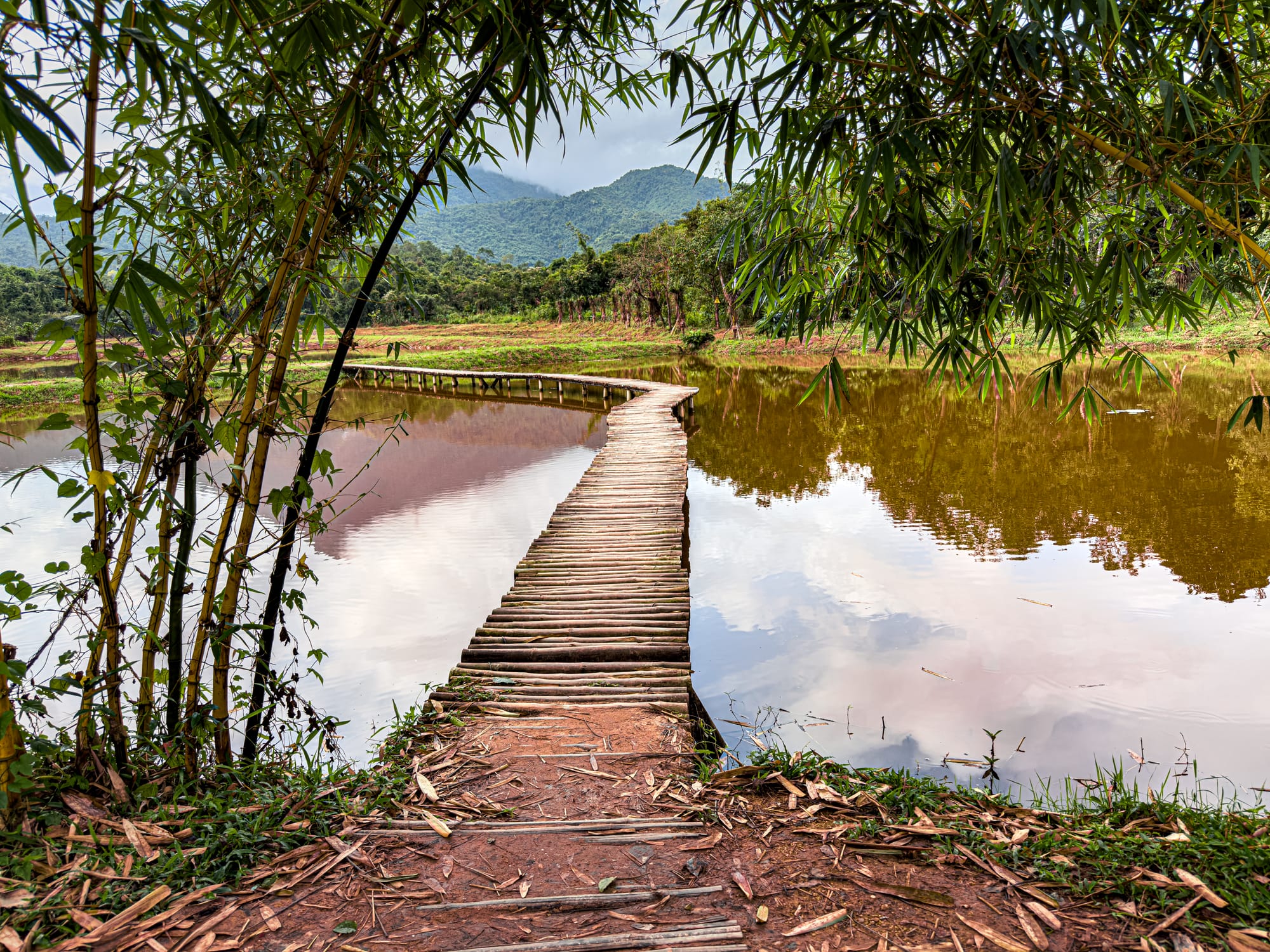
As you walk, you notice the rhythm of silence punctuated by small sounds: the call of a bird, the murmur of a guide explaining history, the crunch of gravel underfoot. Together, these create a soundscape that feels more alive than any reconstruction of ancient music could offer.
At the end of the visit, our tour included a simple brunch at the restaurant onsite, noodle soup with fresh herbs, peanuts, and tofu for those who requested vegan.
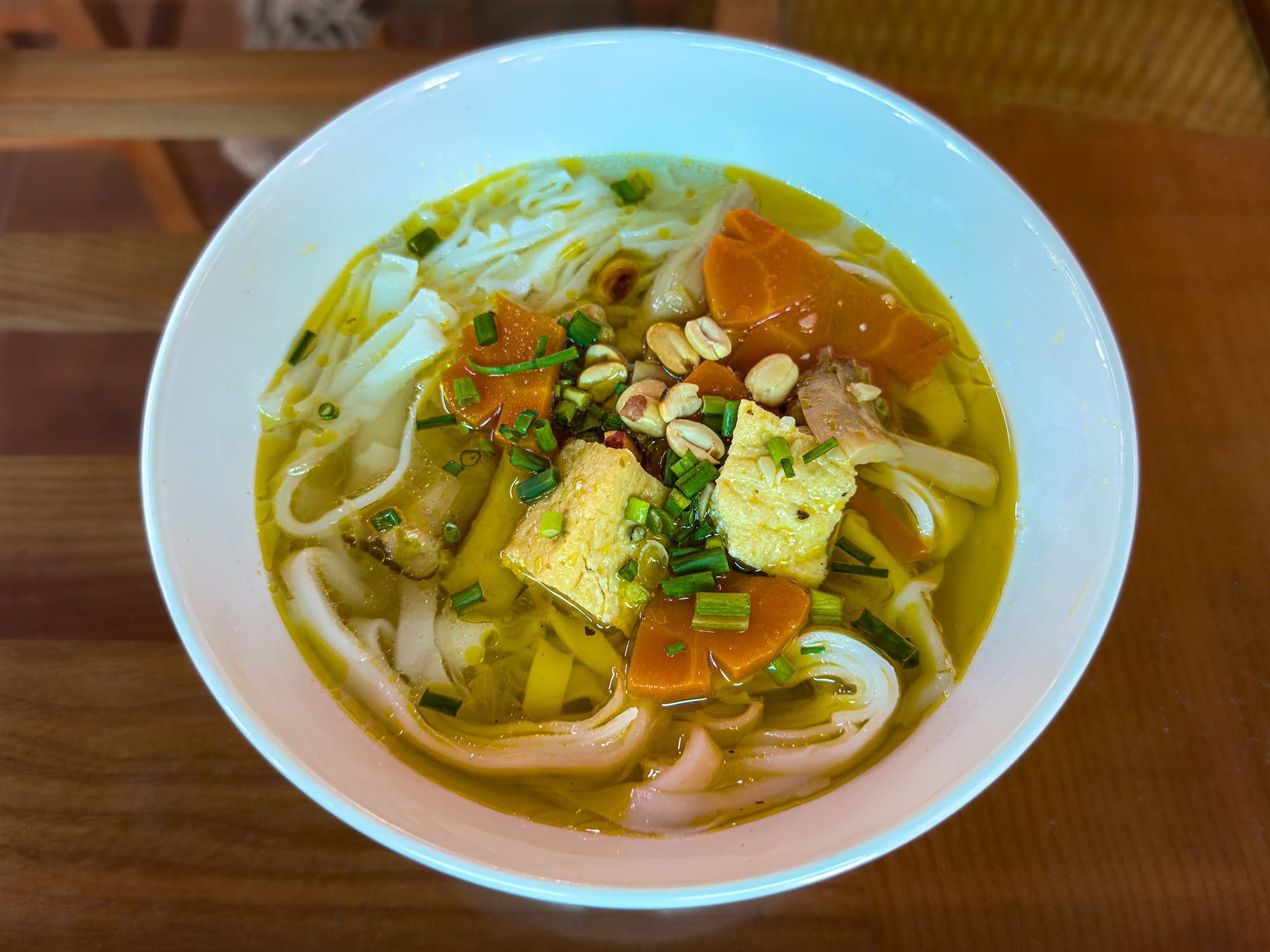
It was a nourishing way to close the morning, a grounding counterpoint to the ethereal atmosphere of the sanctuary.
How to get there
If you’re staying in Hội An, visiting Mỹ Sơn as a half-day trip is one of the most rewarding ways to connect with Vietnam’s deeper layers of history. For ease, context, and the company of a knowledgeable guide, we recommend booking this tour—a seamless way to experience the sanctuary’s textured beauty and return with stories that stay long after the day is done.






